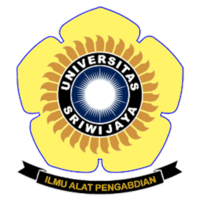Potensi Budidaya Toman (Channa micropeltes) di Sungai Komering Sebagai Pendapatan Tambahan Rumah Tangga Petani Padi Rawa Lebak
Abstract
Purbiyanti et al, 2019. Potency of Toman Cultivation (Channa micropeltes) in Komering River as the Additional Income of Swampy Rice Field Farmers’ Household. pp. 333-337.
The potential of many rivers stretched in South Sumatra is a great potential for the development of freshwater fish culture. One of them is Toman (Channa micropeltes) which is a type of fish from the “gabus” fish. Toman has economic value and is highly nutritious, and is easily cultivated. The community in Arisan Buntal village, Kayu Agung subdistrict, began to cultivate this fish as an additional source of income; outside the wetland swamp rice farming as the main source of income. This study aimed to analyze the income of Toman cultivation in Arisan Buntal village. Quantitative approaches were used in this study. The sampling method was carried out by purposive sampling, technically interviewing the peat swamp rice farmers who also cultivated the Toman fish. A sample of 8 farmers was obtained. Data consists of primary and secondary. The results of data processing show that the average farmer is only limited to cultivating Toman fish as much as 1 cage. The seeds are distributed around 1,000-1,200. The net income received by farmers reached Rp. 11,976,000 / cage / 8 months. The community calls this business "savings in the water". Even though the marketing of Toman fish is relatively easy, the farmers are enough to find collectors they already know; however, there are still some obstacles in the cultivation. These constraints include: high feed costs; fish susceptible to death or loss due to being stolen during maintenance; pollution in the Komering River due to canals from oil palm plantations that flow into the river; and lack of experience of farmers because it is still relatively new in cultivating it. Given the magnitude of the cultivation opportunities and nutritional value of these fish, farmers should increase their business scale. This is done to increase income; also to increase the nutritional value of the farming family in particular. It is hoped that the regional government can support the cultivation of the Toman through the launching of the flagship program of Ogan Komering lirI Regency; and also eliminating existing constraints.
The potential of many rivers stretched in South Sumatra is a great potential for the development of freshwater fish culture. One of them is Toman (Channa micropeltes) which is a type of fish from the “gabus” fish. Toman has economic value and is highly nutritious, and is easily cultivated. The community in Arisan Buntal village, Kayu Agung subdistrict, began to cultivate this fish as an additional source of income; outside the wetland swamp rice farming as the main source of income. This study aimed to analyze the income of Toman cultivation in Arisan Buntal village. Quantitative approaches were used in this study. The sampling method was carried out by purposive sampling, technically interviewing the peat swamp rice farmers who also cultivated the Toman fish. A sample of 8 farmers was obtained. Data consists of primary and secondary. The results of data processing show that the average farmer is only limited to cultivating Toman fish as much as 1 cage. The seeds are distributed around 1,000-1,200. The net income received by farmers reached Rp. 11,976,000 / cage / 8 months. The community calls this business "savings in the water". Even though the marketing of Toman fish is relatively easy, the farmers are enough to find collectors they already know; however, there are still some obstacles in the cultivation. These constraints include: high feed costs; fish susceptible to death or loss due to being stolen during maintenance; pollution in the Komering River due to canals from oil palm plantations that flow into the river; and lack of experience of farmers because it is still relatively new in cultivating it. Given the magnitude of the cultivation opportunities and nutritional value of these fish, farmers should increase their business scale. This is done to increase income; also to increase the nutritional value of the farming family in particular. It is hoped that the regional government can support the cultivation of the Toman through the launching of the flagship program of Ogan Komering lirI Regency; and also eliminating existing constraints.
Full Text:
PDFArticle Metrics
Abstract view : 397 timesPDF - 1636 times
Refbacks
- There are currently no refbacks.

